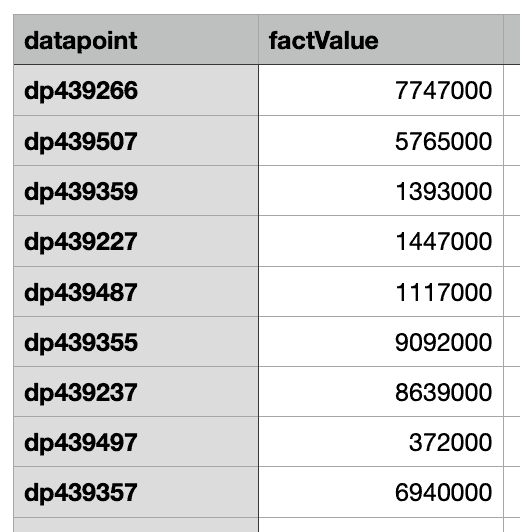Introduction
Integrated Reporting is a comprehensive approach that consolidates crucial information about an organisation’s strategy, governance, performance, and prospects, considering its commercial, social, and environmental context. It enables organisations to communicate their value creation story in a meaningful manner to all stakeholders, often through provision of detailed and granular data. To facilitate this process, the adoption of the xBRL-CSV format offers significant advantages over other reporting methods. In this blog post, we will explore the benefits and features of integrated reporting with xBRL-CSV and its potential to revolutionise reporting practices.
xBRL-CSV initially had to be converted to xBRL-XML before it could be validated using XBRL’s Formula capabilities, sacrificing some of the efficiency gains in the process, but the Formula Working Group has recently defined OIM-Compatible Formula, allowing Formula processors to avoid this conversion step and instead operate directly on the OIM Report Model.
Why xBRL-CSV?
The choice of using CSV (Comma-Separated Values) as the format for integrated reporting is driven by its simplicity, widespread usage, and compatibility with popular tools and frameworks. CSV has been a trusted data format since the 1970s and is supported by a wide range of software, including R, Pandas, Spark and Microsoft Excel. Its plain-text structure allows for efficient processing of large data volumes, parallel and distributed processing, and streaming capabilities, making it suitable for modern reporting requirements.
Challenges with Traditional CSV
While traditional CSV has its merits, it suffers from several limitations when applied to reporting processes. Columns are defined through unstructured documentation, lacking standardised indexes for related documents. Dialect variations in character encoding, comments, header rows, quote characters, line terminators, and whitespace trimming further complicate its usage. xBRL-CSV initially had to be converted to xBRL-XML before it could be validated using XBRL’s Formula capabilities, sacrificing some of the efficiency gains in the process, but the Formula Working Group has recently defined OIM-Compatible Formula, allowing Formula processors to avoid this conversion step and instead operate directly on the OIM Report Model.
Introducing xBRL-CSV
xBRL-CSV builds upon the simplicity of CSV while addressing its limitations. It incorporates structured documentation in the form of a taxonomy, decoupling the data model from the report syntax. This approach benefits from taxonomy-side validation and rendering instructions, ensuring data accuracy and consistency. Developed based on experience in xBRL regulatory reporting, xBRL-CSV utilises JSON metadata files that point to a collection of CSV files. It defines dimensional bindings for tables, rows, and columns, enabling efficient handling of dimensional data.
Modeling Approaches in xBRL-CSV
xBRL-CSV offers three modelling approaches: datapoint-centric, table-centric, and dimension-centric. Datapoint-centric modelling defines datapoints within the metadata, with filers providing values for them. This approach offers compact data transfer but lacks direct data analysis capabilities.

Table-centric modelling aligns metadata with template row-column codes, allowing validation on a row-by-row basis.

Dimension-centric modelling involves creating separate tables for each combination of dimensions, enabling in-situ analysis using standard CSV tools.

Benefits of xBRL-CSV over xBRL-XML
The adoption of xBRL-CSV brings several advantages compared to the traditional xBRL-XML format. First and foremost, xBRL-CSV significantly reduces file size, improving the efficiency of data storage and transmission. The format’s simplicity and consistency lead to faster validation processes, streamlining reporting workflows. Additionally, xBRL-CSV minimises the complexities associated with XPath node navigation in Formula, enhancing performance and reducing the risk of errors.
Phased Introduction of xBRL-CSV
To facilitate a smooth transition, the implementation of xBRL-CSV can follow a phased approach. Initially, regulators may introduce xBRL-CSV as a filing option alongside xBRL-XML for existing mandates (e.g. CRDIV, EIOPA). This allows filers to choose the format that best suits their needs while maintaining compatibility with the current system. As the transition progresses, taxonomy and tool support can be updated to accommodate new reporting requirements. Ultimately, a pure OIM-centric filing system can be adopted, where xBRL-CSV becomes the primary filing format, maximising efficiency and simplification.
Progress and Engagement
The xBRL-CSV standard has made significant progress since its inception. It has reached Recommendation status, with further advancements expected in the near future. Regulators, such as the European Banking Authority (EBA), have shown strong interest in a transition to an xBRL-CSV only filing system. xBRL-CSV also seems like a good fit for the tabular dimensional structures that are central to the ECB’s BiRD initiative. The initiative is currently seeking participants to contribute to this exciting development. Of course, the standard and best practices surrounding it will continue to evolve, and XII is always keen to welcome new volunteers who can actively engage in working groups, such as the OIM Working Group.
Conclusion
Integrated Reporting with xBRL-CSV offers a transformative solution for organisations seeking to streamline their reporting processes. By leveraging the simplicity and efficiency of the CSV format while incorporating structured documentation and validation mechanisms, xBRL-CSV provides a powerful tool for integrated reporting. As the standard continues to evolve and gain support from regulators and industry participants, the future of reporting is set to become more accessible, accurate, and transparent. Embracing xBRL-CSV can unlock new possibilities for organisations, enabling them to effectively communicate their value creation story to stakeholders in the ever-changing business landscape.

